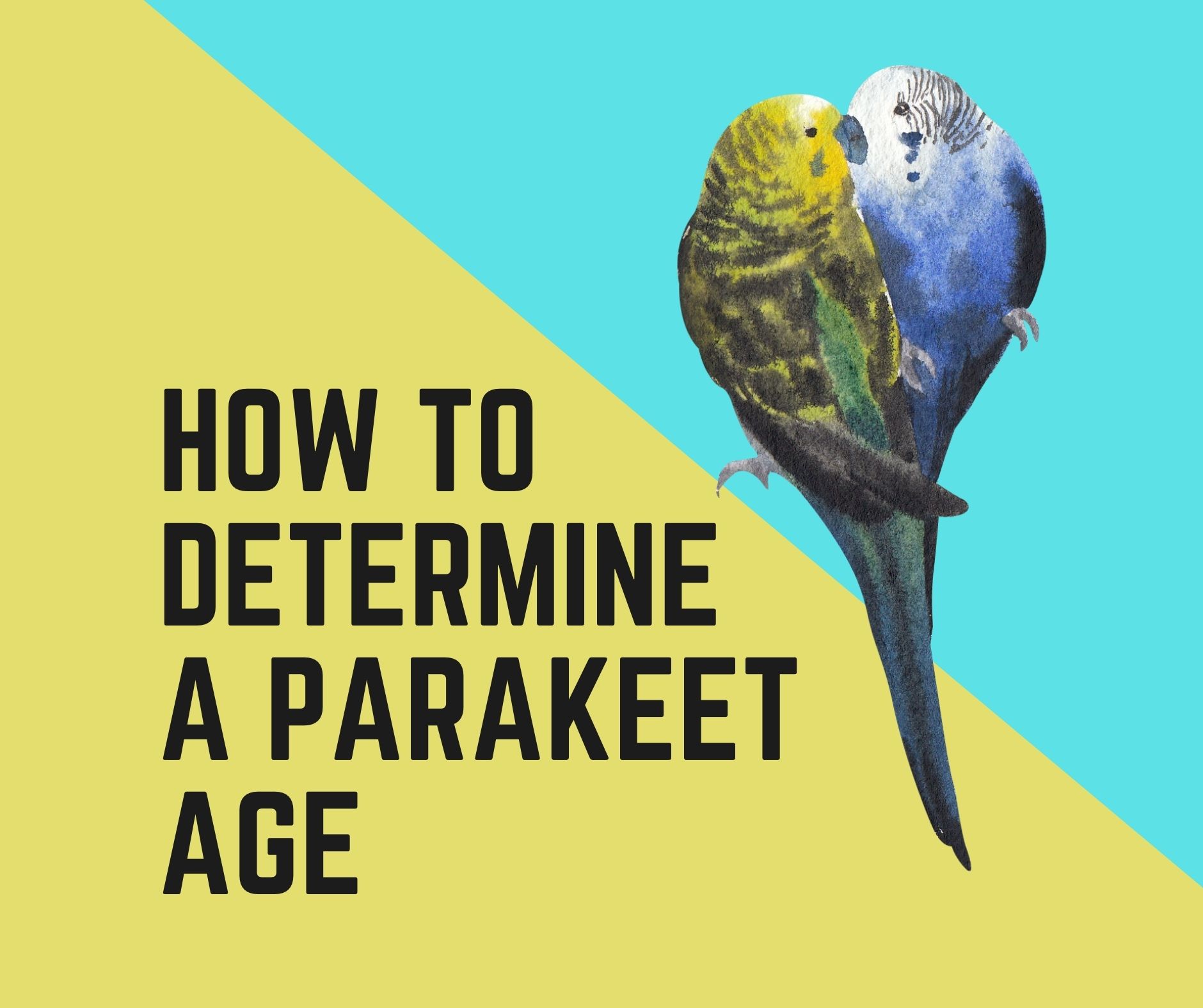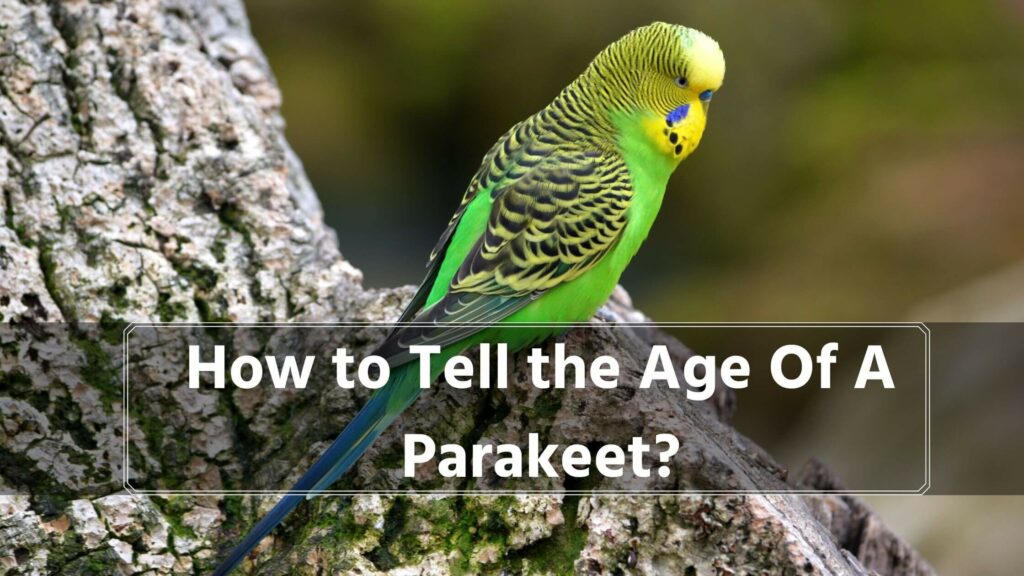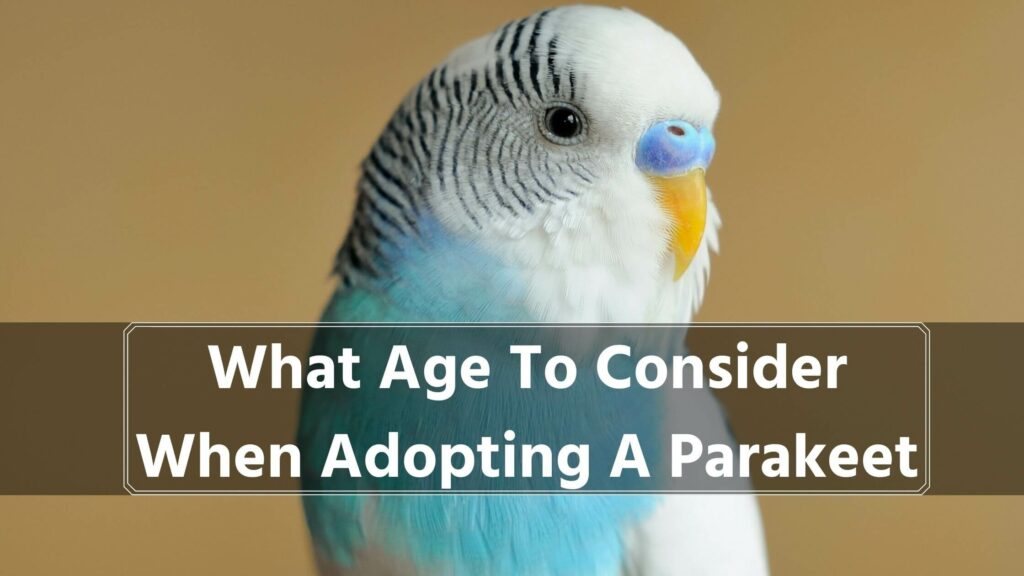
Parakeets are small colorful parrots like birds that are very popular among beginners and bird enthusiasts. Parakeets are also very popular due to the availability of different color mutations. Thanks to their smaller sizes, they are also much easier to tame than other bird species.
However, adopting one can be challenging when it comes to an understanding them. Therefore there is a lot to learn about Parakeets, but one thing that continuously baffles all bird owners is how to determine parakeets’ age.
In this article, you are not only going to learn how to choose the Parakeet’s age but also the 11 different ways to tell the age of a bird. Just keep reading to discover various ways to determine your Bird’s age.
How to Tell the Age Of A Parakeet?

Surprisingly, there is no way to determine the age of an adult parakeet, but with a few exceptions, the color change can tell the estimate. Most parakeets will have feathers and color change anywhere from 12 weeks to a year. After that, the age of your adult parakeet is just a guess.
Parakeets tend to have different activity levels, which vary from Bird to Bird. There is a high possibility that your Parakeet is just a calm bird who has not been adequately settled in yet. Without knowing your Birds history, your Parakeet can be from a year old to more if adopted from a pet store.
There is a huge possibility that your initial Parakeet has been in more than one home and needs a few months to acclimate to the new environment. Apart from this, it is necessary to tame a parakeet and provide plenty of toys in his cage. It is essential to have a swing and obstacles that encourage activity and health. Let’s find out 11 different ways to determine parakeet age.
11 Ways To Determine Parakeets Age
If you have never had a parakeet right from its hatching state, it can be very tough or impossible to be sure of its actual age straightaway. However, a few factors can help you determine the estimated age of your Parakeet, including changes in physical appearance.
Like other birds, Parakeets also go through several changes as they age. These changes are similar to many other smaller bird species, and even what humans experience as they age.
1. Beaks
By looking at the beak and the face of your Parakeet, you can determine its age. A young parakeet is likely to have a premature baby-like face with an enormous exposed beak because the feathers are still short at this side. On the other hand, older Parakeets will have a small beak as their feathers near it cover most of the brim.
2. Body Size
An easy way to differentiate an adult parakeet from the juvenile one is through size. Mature parakeets are likely to be the size of 12-13 inches. The patches on the cheek of a parakeet will also be larger that can cover nearly the entire face. You should always refrain from purchasing a parakeet if it has a large cheek patch.
3. Sleeping Hours
Do you know that older birds are likely to sleep more than younger ones? The same applies to parakeets in captivity. Adult parakeets are likely to rest for 17-18 hours except for the daytime naps. On the other hand, younger parakeets usually sleep for around 10-14 hours a day besides daytime naps.
4. Pelvic Bones
If you are an experienced bird owner, you can use the pelvic bones to tell and gauge a parakeet’s age. Female parakeets’ pelvic bones tend to widen as they age. When you notice a parakeet’s pelvic bones and the distance between its legs is vast, it is adult and ready to start laying eggs.
5. Singing Voice
The voice tone and pitch of a parakeet can also help you understand the age of your male Bird. The baby parakeets and the female ones will rarely vocalize unless startled or provoked.
Mature male parakeets usually speak with a pure voice than their younger male counterparts. If your Parakeet is singing continuously, it is probably more than a year old. If your Parakeet seems shy when vocalizing, it could be either female or juvenile.
6. Tail Feathers
The tail feathers of parakeets tend to be equal to the body size until it is one year old. If your Parakeet’s tail size is similar to the feather size of your Bird, it is probably still younger. After crossing the one-year mark, the feathers of adult birds get more prolonged than the body.
7. Nails
It is probably older if a parakeet’s nails appear to belong, cracked, and bent inwards.
8. Eyes
If your Parakeet is still young, the eye size will be notably larger. The Bird’s eye size tends to get smaller as they age older.
9. Color
If the Parakeet’s color does not appear transparent or not vibrant, then it is still young. Adult Parakeets tend to have more vibrant colors on their body. To identify the gender, the female tends to have less color on their body than the male ones. Male also change the color of their cheeks and at the bottom of their flight feathers.
10. Adolescence
If a Parakeet has molt for the first time, it is probably in its adolescence. Parakeets usually molt at around 6-12 months of age.
11. Foot Scales
Just looking at the foot scale, you can determine if it is younger or older. A younger Parakeet will have few scales with smooth skin. The Parakeets scale will significantly increase as they age, making the skin feel rougher.
Interesting Further Reading
- What Fruits Are Good For Parakeets? 2022 Guide
- Blue Parakeet With Yellow Head: (2022 Guide)
- 3 Best Millet Spray For Parakeets In 2022
What Age To Consider When Adopting A Parakeet

It is recommended to avoid purchasing a parakeet that is still dependent on hand feeding formula. Suppose you have no experience with hand-feeding, then never adopt one that is still a hatchling or rely on hand feeding formula. However, hand feeding is not a science that takes a lot of practice.
With enough knowledge and patience, you can also hand-feed your Bird. It is possible to purchase a baby parakeet nearly weaned and eats soft but almost solid food. Never adopt a bird that needs to be hand-fed with a syringe. You should also avoid purchasing a parakeet that is not eating nearly solid food.
In the wild, baby Parakeets wean and then leave their parents to find a suitable mate. But, in captivity, they rely entirely on their caretaker for companionship and food. You can always adopt a parakeet younger than three years old as it is still in its first 5th of its life span. When adopting a parakeet, you should look for a reputable breeder who also offers Health insurance or history on the Bird.
Conclusion
By now, you have all the ideas on determining parakeets’ age. Determining a parakeet’s age with no track record of their birth date is significantly challenging and even more complicated when they are already adults.
Therefore, it is best to contact the breeder or the pet store to learn the birth date or the estimated age of your Bird. If your Parakeet is still younger, you can determine its age by the many following ways mentioned above.
I tried my best to give you all the information about determining parakeets’ age. If you find this article helpful, please share it. Your one share can help many people learn how to determine parakeets’ age using 11 different factors.

Hi, There and Welcome to BirdsNews.com, is here to help you learn and care about pet birds. and this blog is a journal of everything I’ve learned.
